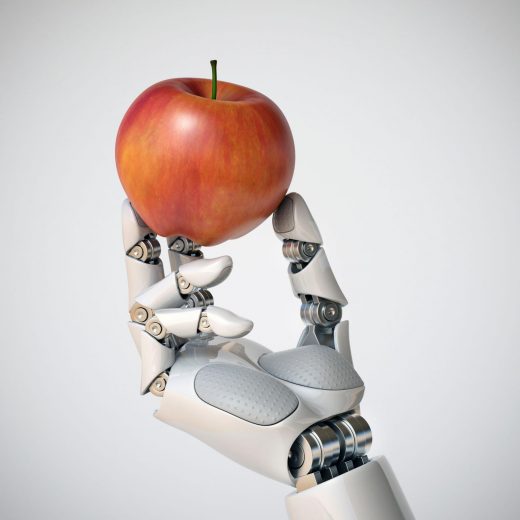
Food and technology have always been deeply entwined. When we hear the word “technology” we may think of computers and software, but the definition of a technology is simply “the practical application of knowledge.” People have been using different technologies for thousands of years to make food — to mill flour, brew beer, make chocolate.
As technology evolves, so too does the way we eat and prepare food. In this edition of Weekly Bites, we summarize three of the most thought-provoking published stories about food and new technologies that are steering us towards the future.
Some new technologies can be scary — after all, no one wants to be replaced by robots — but for the most part, new technologies offer up novel opportunities and avenues for creativity. These three stories illustrate the ways technology is shaping the culinary industry… for better, or for worse.
The noble battle against cheese fraud
Did you know that cheese fraud is kind of a big deal? Like, a $2 billion sized big deal.
The official Parmigiano-Reggiano from Italy is a very specific product. Of course, when you’re shaking a can of parm over some pasta there’s the understanding that you’re not getting the real deal. In fact, any parmesan not labeled Parmigiano-Reggiano, while delicious, is in fact not official Parmigiano from Italy!
The problem is when cheesemakers use the Parmigiano-Reggiano name on cheese that is simply not from the official trade group for the cheese: The Parmigiano Reggiano Consortium. Yes, such a thing exists, and unless they’re the ones selling the cheese, labeling it as Parmigiano-Reggiano is considered fraud. It’s a huge problem, with fraudulent cheese sales equalling sales of the real thing.
The Consortium has recently teamed up with Kaasmerk Matec to provide a high-tech solution. While each wheel of the cheese already had a unique tracking code, this new solution includes the use of a food-safe microchip. This chip utilizes blockchain technology to track and trace all wheels of cheese. And, because the technology is so unique, it’s sure to differentiate the real thing from the cheesy fakers out there.
Blockchain technology and cryptocurrency has been making waves in many industries, including food and hospitality. Blockchain technology uses decentralized and shared “blocks” of code to create completely unique records of tracking and authentication. This use case shows how blockchain technology can be used to authenticate key assets in the culinary industry.
A new website platform for restaurants
There’s a lot of technology out there that wants a piece of small businesses like restaurants. For example, delivery services that offer very little control of customer service and take exorbitant fees, or the cost of creating and maintaining a website and other marketing materials.
BentoBox is a new website hosting platform made specifically for restaurants. The founder of BentoBox, Krystle Mobayeni, was recently recognized by Food and Wine Magazine as a 2022 Game Changer in the culinary industry. She started BentoBox to empower restaurants to retain control over all their marketing assets, to create more sustainable ways to market their restaurants, and to control the guest relationship.
The platform provides a website builder, easy ways to facilitate sustained guest relations beyond the first visit, as well as online ordering options. BentoBox lets a restaurant’s online presence be as welcoming as their physical location.
This nifty new platform is a great example of digital hospitality for the modern age. It’s not about large tech conglomerates — it’s about giving creative control back to restaurants.
SuperMeat doesn’t come from animals
Beyond Meat and other meat-alternatives have exploded in the market, even finding their way to fast food chains. The surge in popularity has to do with a larger trend towards more sustainable and eco-friendly ways of eating.
But, what if you just love meat?
SuperMeat has the answer — stem-cell grown meat. They’re starting with lab-grown chicken, and professional food critics say they can’t tell the difference between the lab-grown and the “real” stuff.
This new technology is far from being a pantry staple. So far, you can only get the lab-grown chicken at the Israeli-based office and attached restaurant. Ido Savir, the CEO and co-founder of SuperMeat says that it’s a matter of a year or two before the general public starts to eat SuperMeat.
His focus isn’t on creating a brand presence and having SuperMeat-labeled products on the shelves. Instead, he is focusing on integrating SuperMeat into the supply chain as a true alternative to raising animals for meat.
As the culinary industry is figuring out new ways to be more sustainable and eco-friendly, lab-grown meats can offer a great solution for those who aren’t satisfied with a plant-based diet.
What are some new technologies that you’re most excited about in the food and hospitality industry? Do you like to play around with new tech, or do you prefer to keep it old-school?
~~~~
Chef Works blends fashion and functionality to provide chefs and other industry workers with apparel that looks good and gets the job done. Have you explored our online catalog today for the latest styles?


